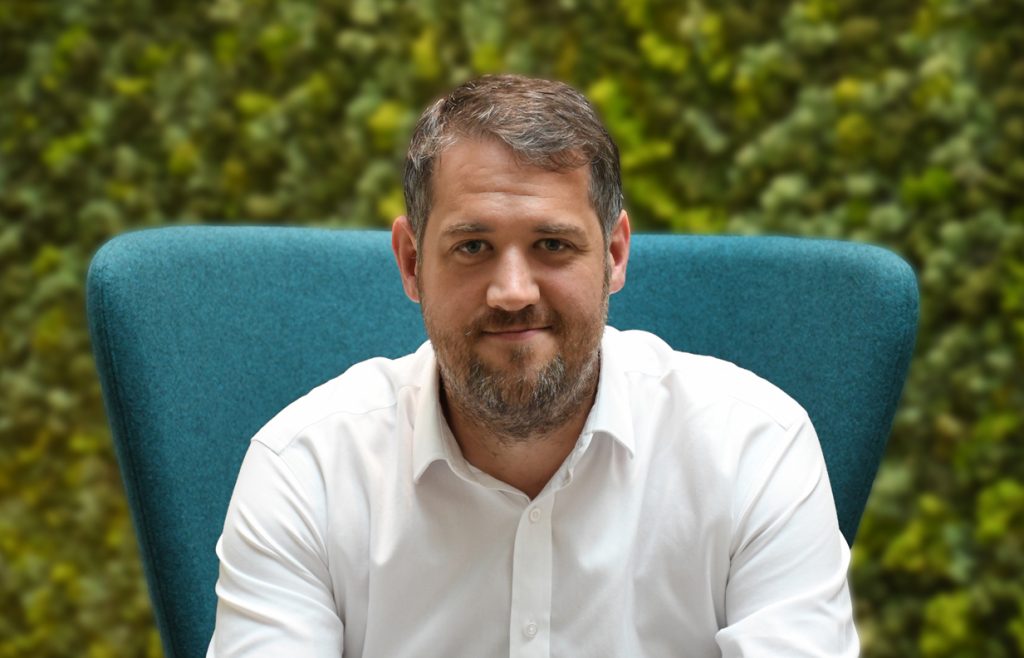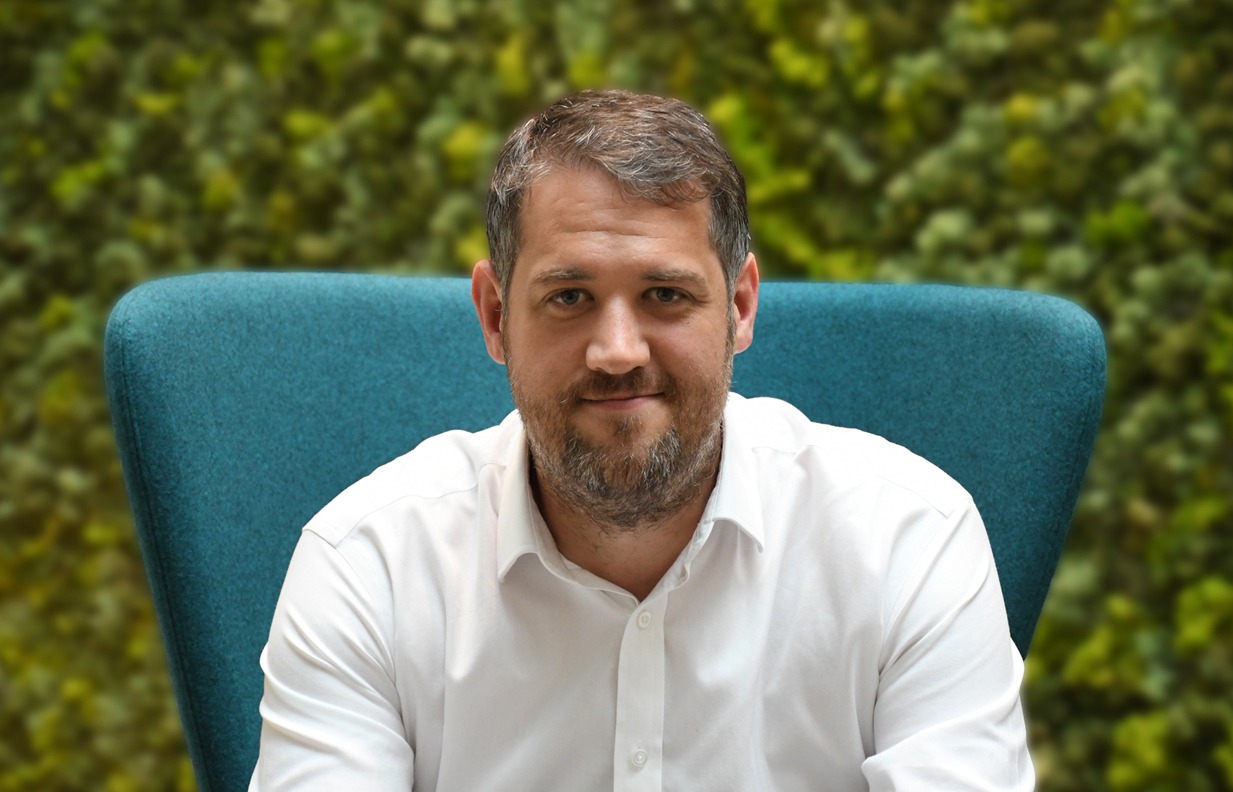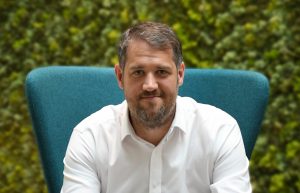
Doug Heron is heading towards marking one year at Lothian after making the switch from the world of fintech platforms to local government pensions. He talks to Room151 about core beliefs, climate change, market disruption, digitisation and consolidation of LGPS in Scotland.
Room151: What do you think the big issues are affecting the management of funds in LGPS right now?
Doug Heron (DH): One of the big things that we need to do is to keep a cool and level head, among the quite significant turbulence in the market and remember our core purpose.
Room151: What is the turbulence for Lothian?
DH: We’re going through a period where the level of change in wider society and the economy has accelerated. As an example, only just a few months ago we were hearing WeWork proclaim they were transforming the way that commercial property operates. Now there’s an IPO put on ice and they’re looking again at whether or not their model is robust enough. But the cycles are speeding up, across all sectors.
New technology: the speed that it gets to market is incredibly quick. The willingness of consumers to adopt new trends is very fast too. The time between an event occurring in the market and its impact on equities, in particular, is very sudden. There’s not a lot of warning.
Room151: What are the internal factors playing a part in how you manage the fund?
REGISTER for Room151’s free LGPS Quarterly Briefing
DH: There’s a lot of scrutiny on asset management, whether it’s within the LGPS or the private sector. In society, we’re all acting with more of a conscience, there’s more transparency, there’s more bite from regulation. Much more of what we do is in the public domain.
People expect data, people expect transparency and reporting; levels of accountability are increasing, understandably and rightly so.
For me it starts with core beliefs for the fund, and about how we interact with the market. We’ve got some fundamental beliefs. For example, that equities will outperform any other asset class over a long period of time. And therefore, a long-term strategy in a pension fund should be anchored in equities. And you shouldn’t make big swings as you go through cycles.
We also believe in low volatility equities. Some equities are more stable with consistent levels of returns, and we think those are more suitable for our pension fund.
RESEARCH: Good stewardship in action
Help Room151 identify exemplar stewards of companies, assets and charities.
We also believe that high fee levels can damage performance. So, a significant part of our investment strategy is making sure that our cost of investment is as low as it can be.
Room151: How do high costs damage performance?
DH: If, for example, on a gross basis you achieve an above benchmark allocation return of, say, 85 basis points, but you’ve paid 1% to achieve that, then you’ve immediately given up your advantage and more. That type of scenario happens too often in pension funds, and we have a tendency to overlook costs when returns are positive, as they have been in the past year.
At Lothian we have an equity strategy managed almost entirely in house. And our cost of running that is about five basis points. A comparable external mandate would be significantly more.
Room151: That must put a lot of pressure on recruiting the right people into your management structures.
DH: Good investment teams aren’t just created overnight. You have to have a very clear and consistent employee proposition that clearly sets out to people why they should join and why they should stay with you.
We’re putting a lot of work into making sure we’ve got that employee proposition right. It’s down to tone from the top, and then there’s culture, there’s learning and development opportunities. It’s about how we communicate, how we behave as individuals.
There’s a lot of investment in making sure that we’ve got the environment that attracts and retains the talent needed to be able to achieve for our members.
Infrastructure
Room151: You mentioned your belief in equities, but Lothian also has an interesting infrastructure portfolio.
DH: Absolutely. Equities should be your largest asset class of exposure at any time. But we maintain exposure in the range of 10% to 15% in infrastructure assets.
Room151: Is that larger than other funds?
DH: I would say it’s one of the highest allocations I’ve seen in our peer group. For us infrastructure offers a good way to access inflation-protected returns—with a degree of inherent capital protection through the existence of real assets—and that has been a long-standing position which has allowed us to build up a diversified portfolio over more than ten years.
But, for me, the quality of an infrastructure asset has to be right. There’s a lot of ways to access infrastructure investment and not all of them are equal. Not all infrastructure investments would be likely to generate the same IRR (internal rate of return).
Room151: What is your preferred infrastructure investment?
DH: We prefer a project that we recognise will be a benefit to society in the long term. That can be things like a drainage project, waste management, transport hubs or facilities, or power generation, including renewables.
As an example, we have a sizeable investment in a wind farm, just outside Edinburgh, which generates power for 33,000 homes in Scotland. It’s great to visit the site on inspection duty and to know you’re supporting the local economy without suffering a return drag to do so.
I heard recently of an example of a wind farm that’s trading in the secondary market at 30% over NAV. I’m pleased that Lothian has been an early investor into that type of asset because the cost of entering the sector late is that you pay a premium for your exposure.
Responsibility
Room151: How has the change from a shareholder to stakeholder model affected your investment thinking?
DH: At Lothian, we are a responsible investor. We don’t do it because it’s in vogue, or because there’s any pressures to do so. We genuinely believe that the owners of assets should act responsibly and ensure that those assets are being used for good.
We’ve got a multi-faceted engagement strategy. First of all, we partner with Hermes EOS, which gives us more power through collaboration and the benefit of advisory information too.
We will also engage closely with [investee] management teams, where there are issues of concern for us across the ESG spectrum.
Room151: Is engagement a big part of your work?
DH: When you think about a normal pension fund there can be several hundred lines of equities. You have that to be able to achieve diversification and to stabilise returns.
You would potentially have a diseconomy effect were you to track and engage with every single stock that you’ve invested in. The important thing is to use data to identify issues of concern.
And then, where you’ve got issues of concern, to ensure that you focus on the right model of engagement. Sometimes that’s a letter, sometimes it’s signing up to a charter, sometimes it’s voting against resolutions, sometimes it’s a private one-to-one with management teams. And across all those options we’re busy.
Room151: Can you measure your outputs from engagement?
DH: Measurement of responsible investment output can be more of an art than a science. When you vote you want to know you’re not doing so passively, but equally there will be good alignment between investors and management teams in most companies so a stat on voting against management will never tell the whole picture.
It’s important to look at the quality of reporting investors receive. One of the things that we’re very big on, as part of Climate Action 100+, is the financial disclosures on climate change [guidelines from the Task Force on Climate-related Financial Disclosures].
What we do, in particular, is we will look back at the quality of reporting to investors, from the companies that are in the scope of the Climate Action 100+ pressure group, and we’ll be asking: Do we think these disclosures are adequate? That’s key for us to being able to assess and monitor the level of financial risk to our members.
Room151: And you get a sense that’s working?
DH: Undeniably, it’s working. You will always find there are people who want more done faster. But for me, it’s very clear that the message is being heard. And if you choose to hold out on these disclosures, then it will become an increasingly untenable position for a management team.
Disruption
Room151: One issue emerging for investors is the profound disruption caused by new entrants, such as the way Lego might be affected by the computer game Minecraft. How does that fit into your investment thinking?
DH: I’m probably not an ideal person to comment as I have always been, and imagine I always will be, a huge fan of Lego. At the same time I’ve never played Minecraft.
But I get the point. You have to understand whether the disruption is a short-term consumer trend or a new norm. And you can already see signs of consumers mistrusting, or rejecting, some of this more recent disruption.
Take for example, Facebook. Five plus years ago, people were talking about how product distribution and advertising must include Facebook. Whereas, you now see [Facebook’s] active user numbers declining, because of fears about data and a trajectory towards restoring personal privacy away from some of the sharper points of consumer influence based on web browser algorithms.
For me, there’s a lot of disruption that will not become embedded into long-term trends, either business or consumer.
What is important is not to be complacent, or reactive, until you’ve looked at the data. You have companies who may in the short term be disrupted, but who have the assets and resources to reinvent. Those companies are worth investing in too.
Take for example out of town retail where the sector is trending down at the moment. Some of those sites have opportunities for change of use consent which could include switches to in-favour investments like leisure where discretionary spend is holding up.
Room151: One connected point to market disruption is that it makes active management look like a good option. Is that something you agree with?
DH: There’s a lot of discussion around a trend to passive at the moment.
For me active management, when accessed in the right way and at the right cost, operated by the right people, will always be superior to passive.
All of our internal equities are what we consider to be active [around 75% of Lothian’s equity portfolio]. We operate a model that blends the best use of human, data and model factors in order to achieve our equity exposure.
We’ve got an excellent team who are focused on the long term. We don’t do daily rebalancing, we don’t measure anything on a daily basis. We focus on deep analysis that gives rise to sensible long-term strategies and we hold our nerve through cycles.
Restructuring
Room151: LGPS in Scotland has been looking at the possibility of structural reform.
DH: Sometime last year a number of interested parties were asked to give a view on four different structural options set out by Derek Mackay, the Scottish Government minister accountable for public finance and the economy. Those were: cooperation, status quo, merger and pooling.
Right now there’s no clear outcome in terms of what those interested parties favour. But I do think there’s a recognition that the status quo probably isn’t a sensible place to be for the long term, so I hope that’s going to be taken off the table
Room151: Why?
DH: You’ve got 11 funds in Scotland, each doing things in different ways. There are clear economies of scale opportunities, from working together and sharing best practice to jointly investing in technology that could be accessed by all at lower cost.
You’ve got a situation with multi-fund employers where, one employer could be a member of different funds, and yet they’ll face 11 different administration processes. So, for most multi-fund employers, the LGPS in Scotland doesn’t represent a logical structure for their employees and the LGPS is exporting inefficiency to those employers.
Room151: Is Lothian in favour of mergers?
DH: That’s right. Specifically, what we said was that we’re in favour of a merger with like-minded funds. I don’t think we went as far as to say there should be a single fund, and that’s certainly not our view today. Nor did we say that we should be forcing funds into merger scenarios.
But if funds, having done their own analysis or their own due diligence, determine that there’s merit in coming together, then the regulations should permit them to do so, and they don’t at present.
We’ve merged Lothian Buses fund with the Lothian main fund. Effectively, both of those funds were operated by the same people. Going ahead with that was relatively straight forward. The costs and risk of doing so were substantially smaller than the benefits of merger.
We’re not talking to any other fund about merger. We’re focused on working together with the rest of the funds. For example, shared investment advisory, where we meet to review investments; facilitate access to infrastructure deals. And Lothian intellectual property can be accessed through our FCA regulated advisory service.
We’re also looking at things like, can we come together to automate forms and achieve more consistency in our processes? So, as a community we’re opening up and expanding that dialogue. But it’d be premature to say we’re in talks to merge.
Pooling
Room151: What are your observations of pooling in England and Wales?
DH: Like many, I picked up the sentiment in the early days of schemes being wary of the significant costs of establishing the pools. Some were concerned that the recruitment has been from outside of the LGPS community, from private asset management. I recognise people are concerned that there’s eight pools and eight models for how they are structured.
Increasingly for me, that noise is falling away and there’s a lot of positivity coming through. Now, having met the management teams of most of the pools, I can certainly tell you that they’re first class, they know what they’re doing. And the confidence that they’ll deliver real benefits for the investors in the pools is high and rightly so.
Room151: Do you take any lessons from the pooling experience?
DH: What it does is give me confidence that, if we were to go into a pooling situation, we would have effectively eight different case studies that we’d be able to consult and use to pick the right model for us.
Room151: What do you see as the future for LGPS in Scotland?
DH: I just think of the individuals and their families whose lives are impacted by the work that we do. In Scotland, one in five households have a material financial interest in the LGPS. And the only future I really focus on is making sure that there’s a secure and sustainable income for those one in five families.
Climate
Room151: What do you think the big external issue will be for LGPS in the future?
DH: There’s definitely an emerging theme around climate change. In Scotland the government has declared a climate emergency. My home city of Edinburgh has made clear that it wants to be carbon neutral by 2037.
The big external issue associated with that entirely sensible aspiration is that it will create significant risk but also significant opportunities.
Statistically, Edinburgh as a city is on track to spend more than a billion pounds each year on energy costs for heating homes, powering our daily lives and running businesses. If we’re to become carbon neutral, then there’s an investment requirement of something like £8bn to get there, but once you’re there, there’s a significantly lower ongoing cost.
So, for me, in an asset management seat, what that translates to is holders of capital today can invest to achieve a significant return but also achieve a significantly positive outcome for society at large.
Digital
Room151: What’s the one big issue you personally want to prioritise?
DH: I come from a very different background to most of my peers. Before coming here I was a CFO in FinTech disrupting retail asset management and working to solve problems from a user’s, or customer’s, perspective.
One learning for me, coming into the LGPS, is that the use of technology to support an increasingly digital delivery model is way behind where it should be.
At Lothian we’re working hard on delivering a digital strategy that will make us more efficient and give our members a choice of ways to engage with us that are relevant to them.
For me this is critically important because we want to equip the people at Lothian pension fund with the tools to be able to deliver for the members.
We often think of our members in pension funds as being very traditional in how they go about life. But, the Silver Surfer is very much alive in our membership; we have examples of members in retirement today looking to engage with us through our website and email rather than a telephone call or coming to see us. Never make assumptions about what your members want, ask them. They’ll be sure to tell you.











